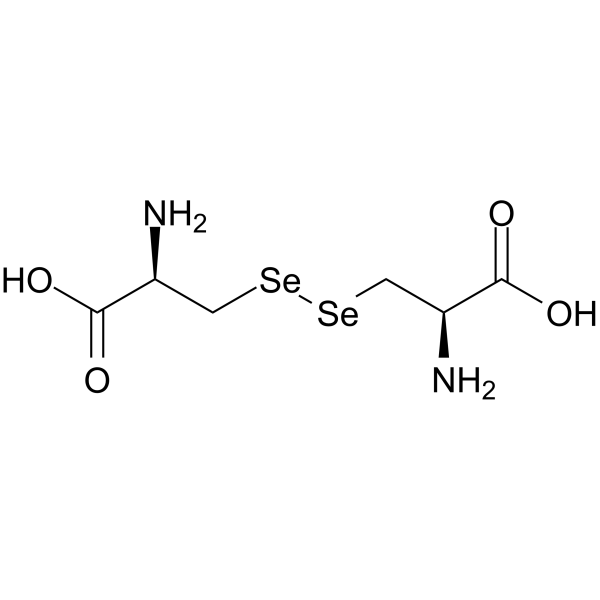
L-Selenocystine
CAS No. 29621-88-3
L-Selenocystine( —— )
Catalog No. M28015 CAS No. 29621-88-3
L-Selenocystine can be used as a building block in biologically active selenol compounds.
Purity : >98% (HPLC)
 COA
COA
 Datasheet
Datasheet
 HNMR
HNMR
 HPLC
HPLC
 MSDS
MSDS
 Handing Instructions
Handing Instructions
| Size | Price / USD | Stock | Quantity |
| 50MG | 34 | In Stock |


|
| 100MG | 49 | In Stock |


|
| 200MG | 79 | In Stock |


|
| 500MG | 142 | In Stock |


|
| 1G | Get Quote | In Stock |


|
Biological Information
-
Product NameL-Selenocystine
-
NoteResearch use only, not for human use.
-
Brief DescriptionL-Selenocystine can be used as a building block in biologically active selenol compounds.
-
DescriptionL-Selenocystine can be used as a building block in biologically active selenol compounds.
-
In Vitro——
-
In Vivo——
-
Synonyms——
-
PathwayOthers
-
TargetOther Targets
-
RecptorAntiviral
-
Research Area——
-
Indication——
Chemical Information
-
CAS Number29621-88-3
-
Formula Weight334.114
-
Molecular FormulaC6H12N2O4Se2
-
Purity>98% (HPLC)
-
SolubilityIn Vitro:?H2O : 5.88 mg/mL (17.60 mMu)
-
SMILESN[C@@H](C[Se][Se]C[C@H](N)C(O)=O)C(O)=O
-
Chemical Name——
Shipping & Storage Information
-
Storage(-20℃)
-
ShippingWith Ice Pack
-
Stability≥ 2 years
Reference
1.Xie S, et al. Magnetic-assisted biotinylated single-chain variable fragment antibody-based immunoassay for amantadine detection in chicken. Anal Bioanal Chem. 2018 Sep;410(24):6197-6205.
molnova catalog



related products
-
Luvangetin
Luvangetin may have anti-inflammatory activity, it can inhibit NO and PGE2 production in LPS-stimulated BV2 cells.
-
(R)-Ambrisentan-d3
(R)-Ambrisentan-d3 is the deuterated version of (R)-Ambrisentan (A575873), which is the R-isomer impurity of Ambrisentan (A575860) that is a nonpeptide endothelin ETA receptor antagonist.
-
Kushenol C
Kushenol C is a good 1,1-diphenyl-2-picrylhydrazyl (DPPH) scavenger, and it exhibits inhibitory activity against Sodium-dependent glucose cotransporter 2(SGLT2).



 Cart
Cart
 sales@molnova.com
sales@molnova.com


